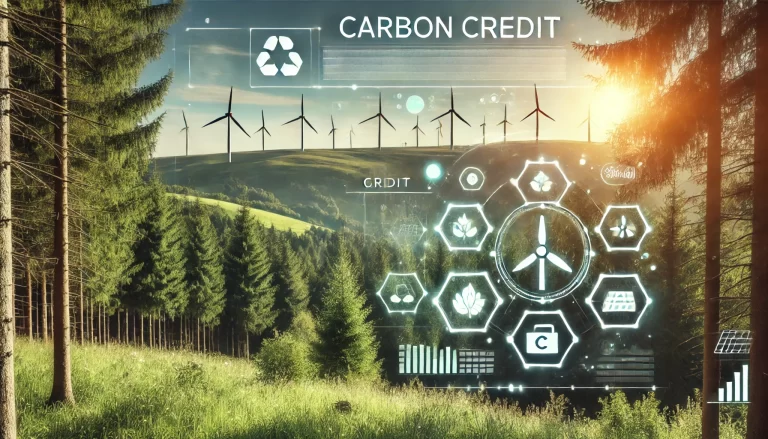
How to Generate, Validate, and Sell Carbon Credits: A Comprehensive Guide
As companies and organizations across the globe commit to reducing their carbon footprint, carbon credits have become a powerful tool in combating climate change. For facilities managers, sustainability professionals, and corporate entities, understanding carbon credits—how to generate, validate, and sell them—can play a critical role in achieving Net Zero targets. This guide walks you through the essentials of carbon credits, from generation to market sale.
1. What Are Carbon Credits?
A carbon credit represents one metric ton of CO₂ (or equivalent greenhouse gases) that has been either removed from the atmosphere or avoided through various environmentally positive projects. By purchasing carbon credits, companies can offset their emissions by investing in projects that either sequester or reduce greenhouse gases.
2. How to Generate Carbon Credits
The first step to generate carbon credits is to create a project that either reduces, avoids, or removes emissions. Typical projects include:
Renewable Energy Projects: Wind, solar, or hydroelectric projects that replace fossil fuel-generated power.
Reforestation and Afforestation: Planting trees that capture CO₂ from the atmosphere.
Energy Efficiency Improvements: Retrofitting buildings, improving manufacturing processes, or updating equipment to use less energy.
Waste Management and Methane Capture: Projects that reduce waste emissions, often by capturing methane from landfills or agricultural processes.
To ensure the project is credible, it must meet specific criteria, such as:
Additionality: The project should reduce emissions beyond what would have happened naturally.
Permanent Reductions: Carbon stored or reduced should not be at risk of reversal (e.g., forest fires).
Verifiable and Transparent: Clear documentation, monitoring, and tracking to ensure project integrity.
3. Validating Carbon Credits
The next step after generating a carbon credit is validation. This involves third-party certification, where an accredited body verifies the legitimacy of the emission reduction or removal. The main certification standards include:
Verified Carbon Standard (VCS): A widely accepted global standard for voluntary carbon credits.
Gold Standard: Known for its high-quality standards, it covers projects that ensure community and biodiversity benefits.
Climate Action Reserve (CAR): Focuses on North American projects with rigorous, transparent protocols.
American Carbon Registry (ACR): Offers standards and certification for various project types, especially in North America.
The validation process includes:
Baseline Study: Establishing the emissions level before the project starts.
Monitoring: Regular tracking of project emissions reductions.
Auditing: Third-party auditors review the project data, ensuring all emission reductions are real, measurable, and permanent.
Once validated, carbon credits are issued to the project owner, which are then ready to be sold.
4. Selling Carbon Credits
There are two primary markets where carbon credits are sold: the compliance market and the voluntary market.
Compliance Market: This market is regulated, often by government-mandated cap-and-trade systems. Companies operating in regions with carbon reduction mandates (such as the EU ETS in Europe or California’s cap-and-trade system) buy credits to comply with legal requirements. Compliance credits generally demand rigorous standards and certification.
Voluntary Market: Companies and individuals purchase credits on this market to offset their emissions as part of corporate responsibility or sustainability goals. Voluntary credits can be sold directly to companies or through carbon credit exchanges.
Selling Carbon Credits: Key Steps
1. List Credits on an Exchange: Platforms like ClimateTrade, Carbon Trade Exchange (CTX), and Verra provide marketplaces for carbon credits.
2. Direct Partnerships: You may partner directly with corporations that want specific types of credits (e.g., renewable energy credits).
3. Auction Markets: Some credits are auctioned, particularly if they are in high demand due to the type of project (e.g., credits from community-focused or biodiversity-rich projects).
5. Challenges and Best Practices
Generating, validating, and selling carbon credits can be complex, and several challenges exist:
High Costs of Validation: Validation can be costly, especially for small projects. Partnering with organizations or seeking grants can help offset these expenses.
Market Volatility: Prices fluctuate based on demand, regulatory changes, and market sentiment. Having a diversified buyer base can mitigate some risks.
Transparency and Accountability: Projects should prioritize clear documentation, ethical standards, and measurable impacts to maintain buyer trust and market value.
Best practices include:
Choose a Recognized Certification Body: Standards like Gold Standard and VCS can increase credibility.
Engage Local Communities: Projects that offer social and economic benefits often attract higher value.
Stay Updated on Market Trends: With increasing climate regulations, new opportunities and challenges are continually emerging.
Final Thoughts
Carbon credits not only provide a revenue stream but also empower businesses to contribute meaningfully to climate action. As the demand for carbon credits continues to rise, those who adopt sustainable projects and understand the credit generation and sales process will stand to gain both financially and reputationally. Whether you’re a facilities manager integrating renewable energy systems or a business leader exploring sustainability initiatives, the path to generating, validating, and selling carbon credits can significantly enhance your organization’s sustainability impact and position in the market.
@parashar for Newz Quest
